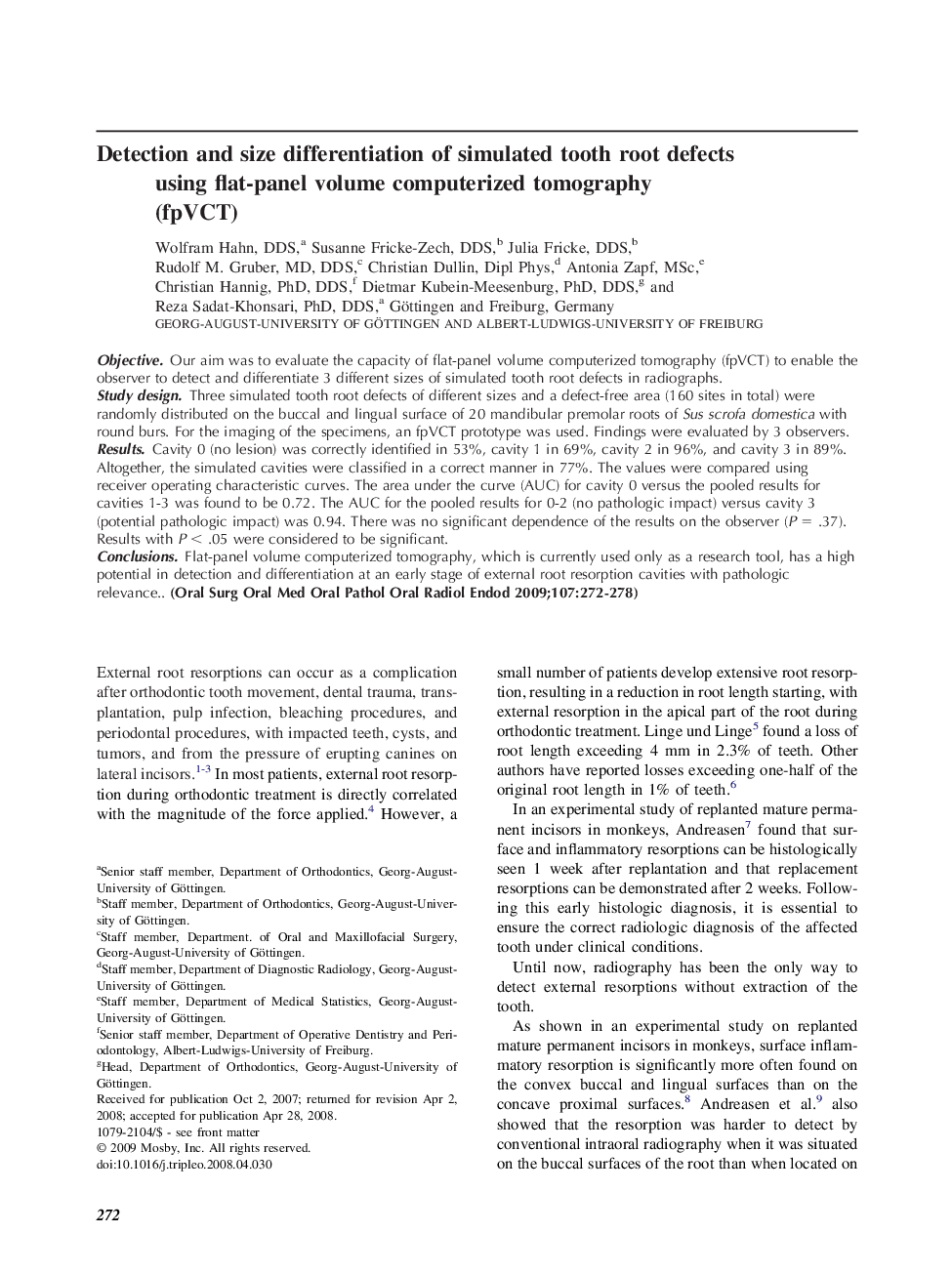| Article ID | Journal | Published Year | Pages | File Type |
|---|---|---|---|---|
| 3168337 | Oral Surgery, Oral Medicine, Oral Pathology, Oral Radiology, and Endodontology | 2009 | 7 Pages |
ObjectiveOur aim was to evaluate the capacity of flat-panel volume computerized tomography (fpVCT) to enable the observer to detect and differentiate 3 different sizes of simulated tooth root defects in radiographs.Study designThree simulated tooth root defects of different sizes and a defect-free area (160 sites in total) were randomly distributed on the buccal and lingual surface of 20 mandibular premolar roots of Sus scrofa domestica with round burs. For the imaging of the specimens, an fpVCT prototype was used. Findings were evaluated by 3 observers.ResultsCavity 0 (no lesion) was correctly identified in 53%, cavity 1 in 69%, cavity 2 in 96%, and cavity 3 in 89%. Altogether, the simulated cavities were classified in a correct manner in 77%. The values were compared using receiver operating characteristic curves. The area under the curve (AUC) for cavity 0 versus the pooled results for cavities 1-3 was found to be 0.72. The AUC for the pooled results for 0-2 (no pathologic impact) versus cavity 3 (potential pathologic impact) was 0.94. There was no significant dependence of the results on the observer (P = .37). Results with P < .05 were considered to be significant.ConclusionsFlat-panel volume computerized tomography, which is currently used only as a research tool, has a high potential in detection and differentiation at an early stage of external root resorption cavities with pathologic relevance..
